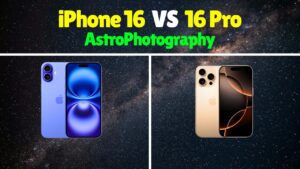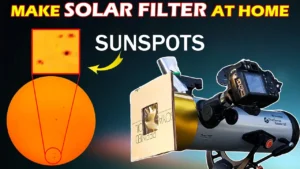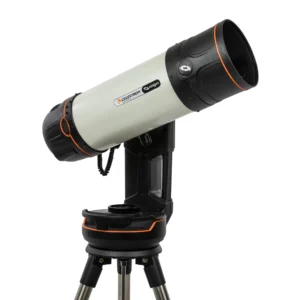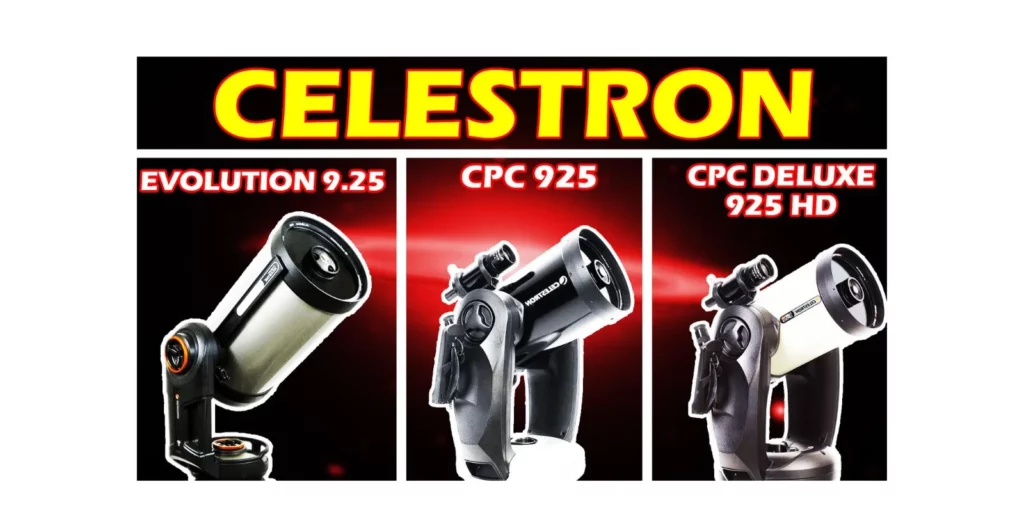
We have seen the comparison of different 8-inch and 6-inch telescopes from the various series of telescopes from Celestron. In this article, we’ll look at the Celestron 9-inch models from various series. Specifically, the 9-inch models from the Evolution and CPC series. The CPC series includes two 9-inch telescopes: the CPC 925 and the CPC Deluxe 925 HD.
One thing to remember is that when you go above the aperture size of 8 inches, the telescope becomes huge and heavy. With these massive telescopes, you are mostly going toward professional-level telescopes.
Celestron NexStar Evolution 9.25
This is a Schmidt-Cassegrain-type telescope. It has an aperture of 235 mm. It has a focal length of 2350 mm and a focal ratio of 10. The highest useful magnification of this telescope is 555x, and the lowest useful magnification is 34x.
This telescope comes with two eyepieces, one of which is 40 mm and the other 13 mm. The highest magnification you get with a 40mm eyepiece is 59x, and with a 13mm eyepiece, the highest magnification you can get is 180x.
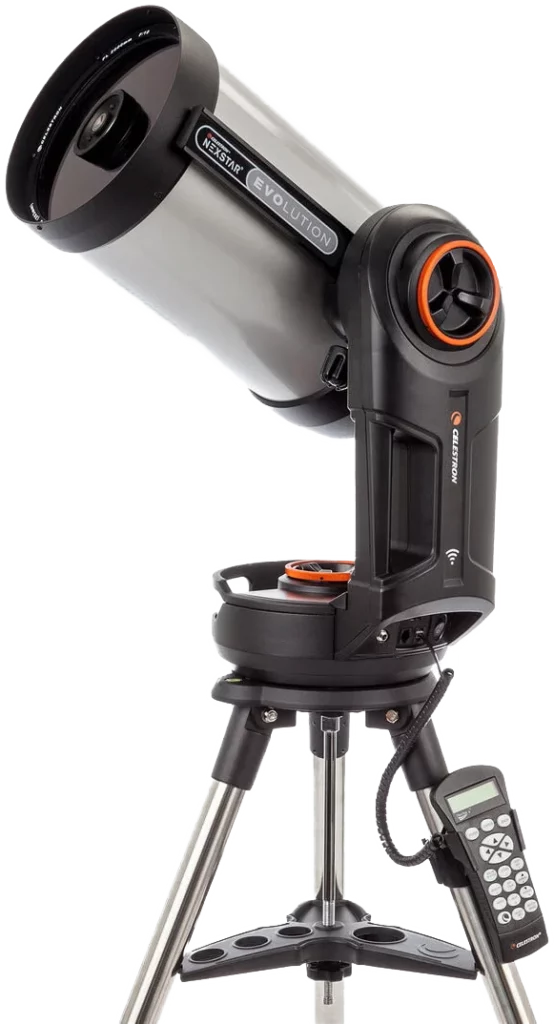
NexStar Evolution 9.25 mount
The telescope has a single-fork alt-azimuth mount. The mount weighs approximately 16 pounds (7 kilograms). The load-carrying capacity of this mount is 25 lbs or around 11 kg. The optical tube assembly of this telescope weighs 20 lbs or around 9 kg. So this mount can easily carry the optical tube assembly, giving it some stability.
The mount’s tripod weighs around 26.6 lbs or 12 kg. The total weight of this telescope kit is 62.6 kg or about 28 kg.
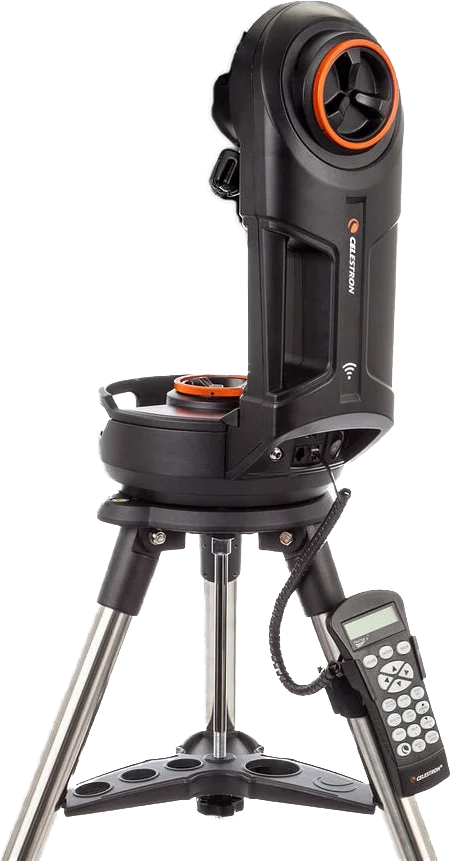
Details of the Celestron CPC 925 GPS XLT
The optical tube assembly of the CPC 925 and Evolution 9.25 is exactly the same. It has an aperture of 235 mm. Its focal length is 2350mm, and its focal ratio is 10. The CPC telescope comes with only one 40mm eyepiece. The highest magnification you get with this eyepiece is 59x. Both optical tube assemblies have Starbright XLT coatings for maximum light throughput.
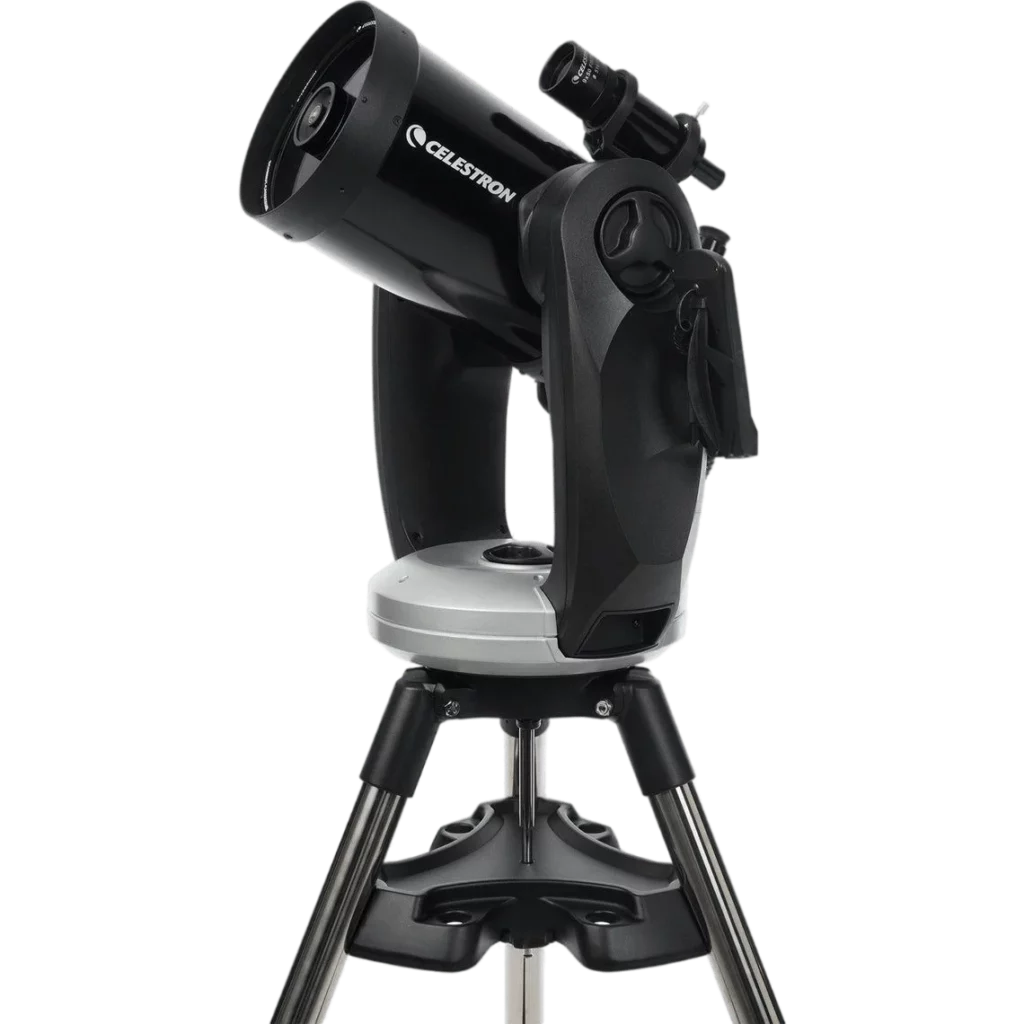
Celestron CPC 925 mount
The difference between these CPC and Evolution 9-inch telescopes is the mount. The CPC series has a double-fork alt-azimuth mount. The double fork mount adds more stability. The mount weighs approximately 17 kg (38 lbs). The mount’s tripod weighs around 19 lbs or 9 kg. The total weight of the telescope assembly is 77 lbs., or 35 kg.
You can notice the difference between the weight of the Evolution mount and the CPC mount is almost double. A heavier mount will offer you much more stability. The next most important thing in a telescope after the optical tube assembly is the mount. If you have a really good optical tube assembly but the mount of your telescope is not good, the end result of your telescope will not be great. A heavy, load-carrying capacity mount is therefore essential if you want to have a good stargazing experience.
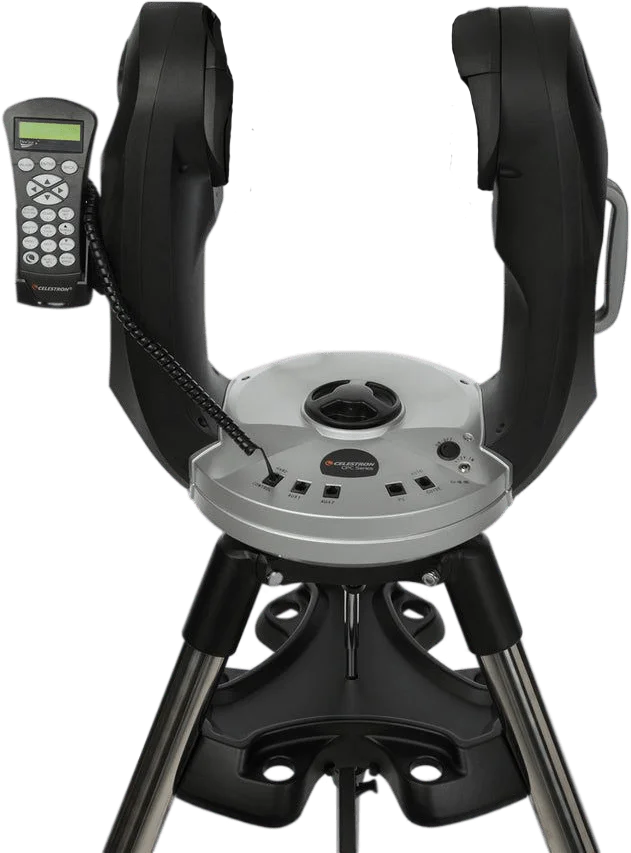
If your mount has vibrations or if it wobbles then it loses all the appeal of your telescope. If you want a good sturdier mount that offers great stability and stable views then you should go with the CPC series.
One of the advanced features of the CPC mount is that it has periodic error correction. This feature is very helpful in astrophotography. The periodic error occurs because of mechanical errors and is usually unavoidable. These mechanical errors occur during the tracking for astrophotography. These errors are part of the drive system and are very predictable. The periodic error correction system records these errors and then tries to reduce them. So ultimately, you get accurate and smooth tracking with this mount.
Details of the CPC Deluxe 925 HD telescope
The optical tube assemblies Evolution 9.25, CPC 925, and CPC Deluxe 925 have the same dimensions. The optical tube assemblies of CPC 925 and Evolution 9.25 are exactly the same. However, the CPC Deluxe 925 HD optical tube assembly is different from the previous two models. CPC Deluxe 925 HD uses Edge HD technology.
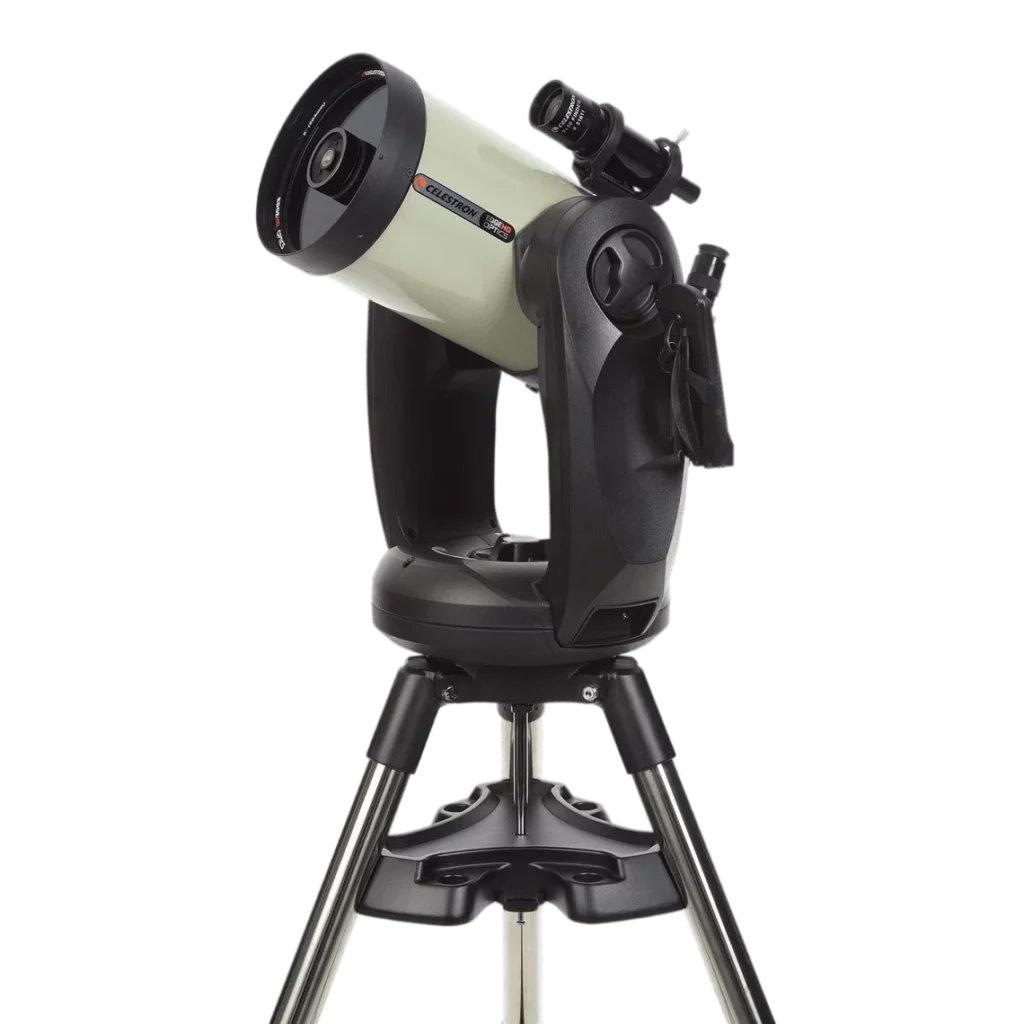
The Edge HD technology is developed by Celestron and offers far sharper and crisper views from your telescope. The Edge HD gives flat views of objects till the edge of the field of view. In a normal telescope, the views on the edge of the field of view get distorted, but with Edge HD, this is not the case.
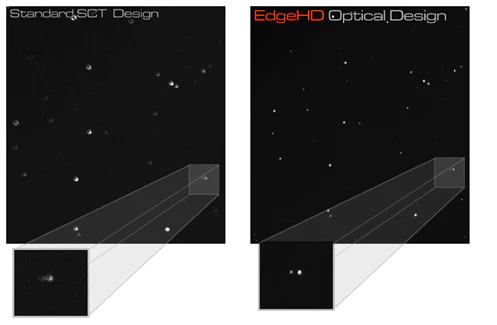
The mount of the CPC 925 and the CPC Deluxe 925 HD is exactly the same. The only difference is that the CPC Deluxe 925 HD has superior optics and offers sharper views of celestial objects.
Astrophotography with these telescopes
All the telescopes come with the single and double fork variations of the alt-azimuth mount. An alt-azimuth mount is suitable for long-exposure astrophotography. If you want to know more about different types of mounts, then you should read this article. Short exposure photography, on the other hand, can be used to capture images of planets and bright deep space objects.
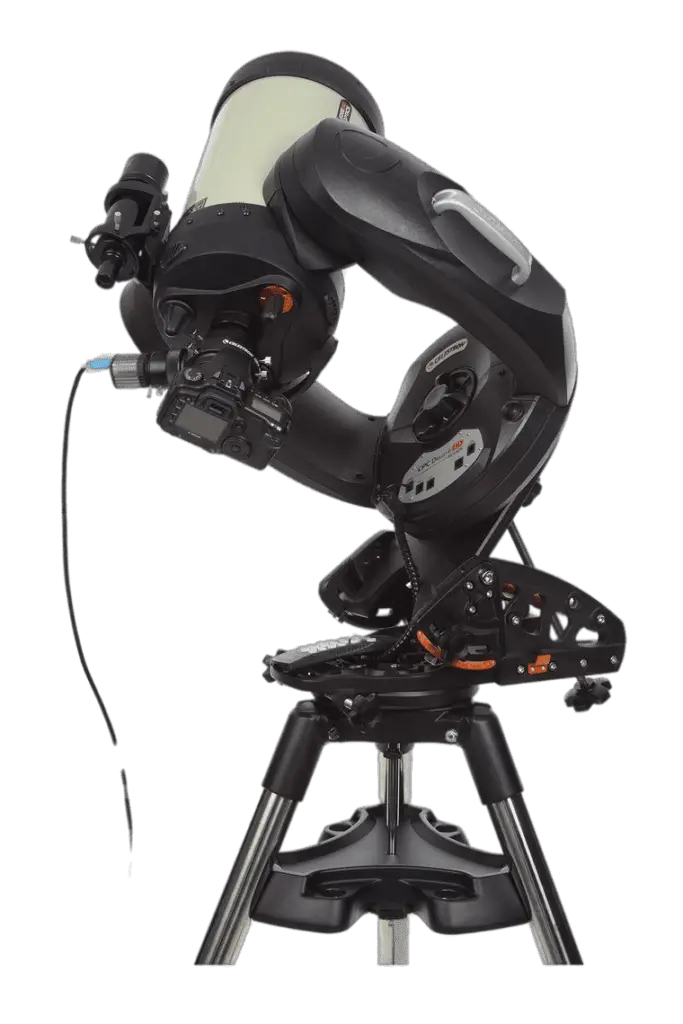
If you want to do long exposure astrophotography, which usually means capturing beautiful images of very dim deep space objects, then you will need to buy a good equatorial mount, or you can buy a wedge that will convert this AZ mount into an equatorial mount. Then you can do long-exposure astrophotography with these telescopes.
Which one should you buy?
All these telescopes are professional-type telescopes. They are heavy and very costly. It all depends on your budget.
Out of these three telescopes, the NexStar Evolution 9.25 costs less, and the CPC Deluxe 925 HD is the most expensive.
So depending on your budget and what you want to observe, you can go with any one of these telescopes.
Summary
| Evolution 9.25 | CPC 925 | CPC Deluxe 925 Edge HD | |
| Aperture | 235mm (9.25″) | 235mm (9.25″) | 235mm (9.25″) |
| Focal Length | 2350mm (92.51″) | 2032mm (92.51″) | 2032mm (92.51″) |
| Focal Ratio | f/10 | f/10 | f/10 |
| Highest Useful Magnification | 555x | 555x | 555x |
| Lowest Useful Magnification | 34x | 34x | 34x |
| OTA weight | 20 lbs (9 kg) | 20 lbs (9 kg) | 20 lbs (9 kg) |
| Mount Type | Single fork AZ mount | Double fork AZ mount | Double fork AZ mount |
| Mount Load Capacity | 25 lbs (11 kg) | 34 lbs (15.8 kg) | 34 lbs (15.8 kg) |
| Total Weight | 62.6 lbs (28 kg) | 77 lbs (35 kg) | 77 lbs (35 kg) |
| BUY HERE | BUY HERE | BUY HERE |
We hope this comparison helped you understand the exact difference between these three telescopes. If you are looking for a telescope specifically for astrophotography then you need to check this article. You can also find the best suitable telescope for you with our telescope suggestion tool.


